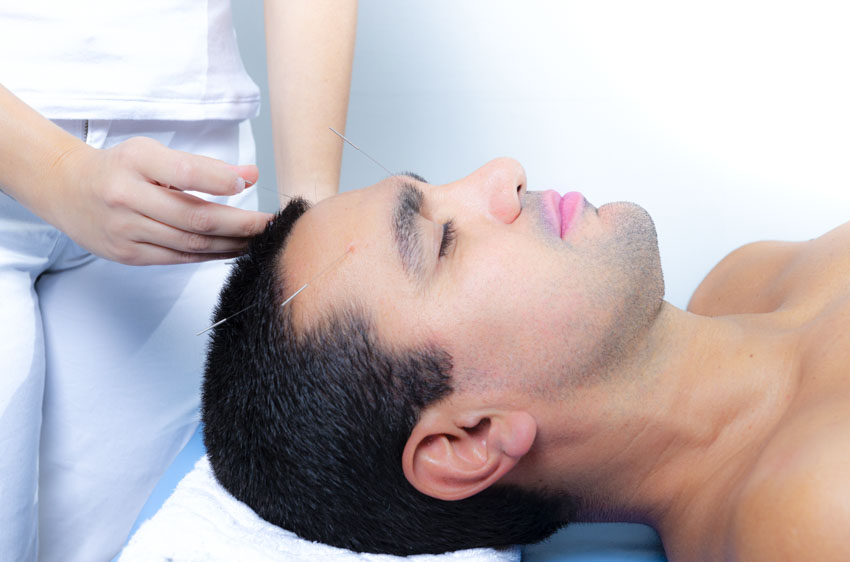
Acupuncture combined with herbal medicine is effective for the alleviation of depression. Researchers from Shaoxing Seventh People’s Hospital conclude that a modified version of the herbal formula Chai Hu Shu Gan San plus acupuncture is effective for the treatment of depression. [1] Based on the Hamilton Depression Rating Scale, serum cytokine, and neurotransmitter levels, the total effective rate was 100% for patients receiving both acupuncture and herbal medicine. Patients receiving only acupuncture had an 85% total effective rate and patients receiving only herbal medicine had an 87.5% total effective rate.
Learn about this research and other topics such as how acupuncture benefits bladder function for diabetics, fights influenza and decreases mortality rates, and releases frozen shoulder at HealthCMi webinars. Topics covered in HealthCMi webinars present traditional acupuncture point prescriptions and modern scientific research demonstrating efficacy rates. To learn more, visit the following: Acupuncture Live Webinar >
In the Shaoxing Seventh People’s Hospital research on depression, clinical efficacy was determined by HAMD (Hamilton Depression Rating Scale) scores. HAMD score reductions of ≥50% were defined as clearly effective. HAMD reductions of 25–49% were classified as effective and HAMD reductions of <25% were classified as ineffective.
In group A (herbs only), there were 15 clearly effective, 20 effective, and 5 ineffective cases, yielding a total effective rate of 87.5%. In group B (acupuncture only), there were 15 clearly effective, 19 effective, and 6 ineffective cases, yielding a total effective rate of 85%. In group C (acupuncture plus herbs), there were 19 clearly effective, 21 effective, and no ineffective cases, yielding a total effective rate of 100%.
Serum cytokine levels quantified by the researchers included IL-6, TNF-α, and IL-1β. These pro-inflammatory cytokines are correlated with central nervous system fluctuations and are markers of depression. Group A mean pre-treatment IL-6 levels (pg/mL) were 16.63. In Group B, the levels were 16.72 and they were 16.59 in group C. Following Traditional Chinese Medicine (TCM) treatments, the levels reduced to 10.52, 10.35, and 6.20 respectively. The combination group receiving both acupuncture and herbs demonstrated the most significant improvements. The same pattern was quantified for TNF-α and IL-1β levels, with the combination group demonstrating the greatest improvements.
Important increases in serum neurotransmitter levels were documented after TCM treatments. These levels are often low in patients suffering from depression. Serotonin (5-HT), norepinephrine (NE), and brain derived neurotrophic factor (BDNF) levels improved significantly in all three groups. The acupuncture plus herbs group demonstrated the greatest improvements. The modified version of Chai Hu Shu Gan San used in the study was comprised of the following herbs:
- Chen Pi 6 grams
- Chai Hu 6 g
- Chuan Xiong 4.5 g
- Xiang Fu 4.5 g
- Zhi Ke 4.5 g
- Bai Shao Yao 4.5 g
- Zhi Gan Cao 1.5 g
For patients with tongue petechiae (small red or purple dots), Dang Gui and Dan Shen were added. Each herbal tea preparation was decocted in water and divided into two portions, taken twice daily. For patients receiving acupuncture, the following acupoints were applied:
- Yintang (extra point)
- Baihui (DU20)
- Sishencong (extra point)
- Shenting (DU24)
- Neiguan (P6)
- Shenmen (HT7)
- Sanyinjiao (SP6)
- Hegu (LI4)
- Taichong (LV3)
- Taiyang (extra point)
References:
1. Tong Weilong, Wu Jingzhu, Zhao Guiqin, Zhao Mingyong, “Study on Effect of Modified Chaihu Shugan Powder Combined with Acupuncture in Patients with Depression and Influence for Related Indexes,” Chinese Archives of Traditional Medicine Vol. 37 (1), 227-229 (2019).
2. Feng Wentao, Chen Gaijuan, Hou Xiaohui “Treatment of diabetic neurogenic bladder with warm acupuncture combined with western medicine, clinical symptoms, residual bladder volume,” Asia-Pacific Traditional Medicine. vol.15 (8) p.101-103 (2019).
3. Lang BX, Jin LQ, Liu SN, Liu XR. Clinical observation on the effect of acupuncture combined with conventional therapy on influenza H1N1 [J]. Chinese Archives of Traditional Chinese Medicine, 2011, 29(2):411-412.
4. Chou YF, Cao YM, Wang JL, Yang ZM, Qiu ML. Protective effect of acupuncture on mice infected with influenza virus [J]. China Journal of Traditional Chinese Medicine and Pharmacy, 1990(2):16-18.


